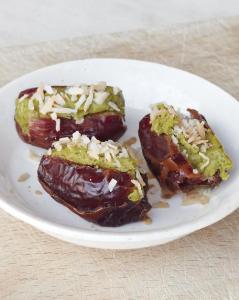Results of the three-month trial involving women in their 50s and 60s suggest that outdoor exercise programs should be promoted to help older women keep active, the researchers conclude.
“Being physically active is essential to be healthy and remain functional with age,” said senior author Isabelle Dionne of the University Institute of Geriatrics of Sherbrooke in Quebec.
Only about 13 percent of Canadian women older than 59 years and less than 9 percent of older American adults get at least 150 minutes of physical activity each week, Dionne’s team writes in the journal Menopause.
Exercise is important for post-menopausal women because it helps to decrease the prevalence of chronic diseases, physical disability, cancer, and infections and reduces the risk of dementia, Dionne told Reuters Health
“Finding the right activity, meaning that it provides pleasure and motivation, is the key to remaining active as long as possible,” she said in an email.
Dionne said that one of her Master’s degree students had observed that women who exercised outside seemed to be happier.
“Because adherence is the main problem with healthy lifestyle, I felt training outdoors may be part of the answer to help people start and, especially, remain active,” Dionne said.
For the study, Dionne and her colleagues enrolled 23 post-menopausal women to participate in a 12-week long exercise program. All of the women normally led a sedentary lifestyle and exercised less than twice weekly, took no medications, didn’t smoke and had no symptoms of depression or only mild ones.
The women were randomly assigned to one of two groups. One group exercised together outdoors three times per week while the other group followed the same program indoors. The exercise programs included both aerobic exercises and strength training.
The women were asked how they were feeling before and halfway through their midweek sessions. In addition, before and after their workouts, the women answered questionnaires designed to measure feelings of positive engagement, revitalization, physical exhaustion and tranquility.
The study team found that on average, the women who exercised outdoors had a greater sense of tranquility after working out and attended more sessions – 97 percent of the 36 sessions in the trial for the outdoor exercisers compared to 91 percent of sessions attended by the indoor group.
The outdoor exercisers also showed decreased depressive symptoms and increased activity levels outside of the workout sessions, compared to the women who exercised indoors and whose general activity level didn’t change.
“Training outdoors brings a whole new dimension to being active and provides so many stimuli that people adhere to a larger extent than going to a gym or training in groups indoors,” Dionne said.
Thus, Dionne said, the women training outside were in a better mood, more motivated and satisfied with their training program.
Dionne said there are a growing number of ways to train outdoors such as taking outdoor physical activity lessons, or exercising in outdoor gyms, kids’ parks and city “green areas.”
“This adds to the well known nature paths, bike paths, suburb parks, quiet streets (to walk), community ice rinks, etc.,” she said. “It is only a matter of using them.”
Dionne said that similar results have been shown in studies of younger women.
“Regarding men, we do not have scientific evidence and we can only assume that it is somewhat the same,” Dionne said.







